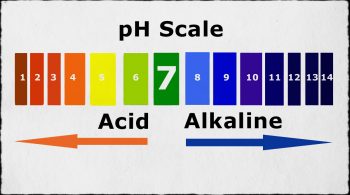How to test your urinary pH
Testing urinary pH is easy, but you need pH litmus paper sticks to do the test. These are very easy to find, and very cheap, found at your local pharmacy or online. You want strips that test pH between 5 and 9.
You may be testing your urinary pH to see which urinary tract infection treatment you should be using, or just to keep tabs on it for another reason.
No matter what, your urinary pH will fluctuate during the day, but typically not by much. When you have a urinary tract infection (UTI), specific bacteria cause your urine to become more or less acidic, so knowing what your urinary pH is doing means you can choose the treatment that works best in either environment.
Testing your urinary pH at home
- Sit on the toilet as usual when you need to urinate, holding your urinary pH tester stick.
- When your urine flow has begun, dip the pH tester strip into your urine stream so it gets wet, and then take it straight out. No need to soak it.
- See what colour changes appear immediately, and correlate that with the number. Remember the number.
- Neutral is 7.0, while alkaline is towards the high numbers, and acidic is towards the low numbers. Normal urinary pH is between 4.5 and 8, but usually it’s between 5.5 and 6.5 (slightly acidic).
- If your urinary pH is very close to one end or the other, it could be a sign of something else going on with your health, so just be aware of the fact that your urine is a good indicator of some health conditions.

Medications you are on can change your urinary pH
Some medications will alter your urinary pH:
- Acetazolamide (epilepsy, glaucoma)
- Ammonium chloride (cough mixture)
- Methenamine mandelate (UTIs)
- Potassium citrate (gout, kidney stones)
- Sodium bicarbonate (heartburn, acid reflux, indigestion)
- Thiazide diuretics (high blood pressure, blood clotting disorders)
What urinary pH means
If you are testing your urinary pH regularly, you may see some patterns emerging. It may be that your urinary pH is consistently high or consistently low, even after your infection has cleared up completely.
If this is the case, you may need to visit your doctor to talk about what’s going on, since very high or very low urinary pH, consistently, is not normal and could indicate a deeper health issue.
Low urinary pH (acidic)
- Dehydrated
- Diarrhoea
- Starvation/anorexia
- Diabetic ketoacidosis
- Acidosis
High urinary pH (alkaline)
- Urinary tract infection
- Kidney issues
- Vomiting or stomach contents removal
- Pyloric obstruction





